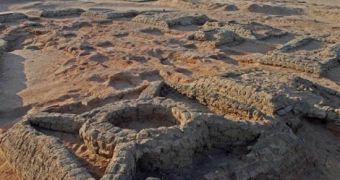Between the years 2009 – 2012, researchers working at the Sedeinga archaeological site in Sudan succeeded in pinning down and unearthing a total of 35 ancient pyramids, neatly packed together and relatively small.
Thus, the base of the largest of these pyramids is merely 22 feet / 7 meters wide, whereas the smallest has a 30 inches / 750 millimeters-wide base.
Information made available to the general public thus far says that the pyramids most likely date back to roughly 2,000 years ago.
Apparently, the archaeological site where these ancient constructions have been unearthed was, at that time, part and parcel of a kingdom known to historians as Kush.
Researchers suspect that the practice of building pyramids in this region of present-day Sudan came as a result of Kush's inhabitants being influenced by Egyptian funerary architecture, Live Science reports.
Still, what distinguishes the people of Kush from the ancient Egyptian civilization is the fact that, unlike the latter, they became quite fond of building their pyramids both in rather larger numbers, and stunningly close to one another.
According to the same source, researcher Vincent Francigny, currently collaborating with the American Museum of Natural History, commented with respect to these archaeological findings as follows:
“The density of the pyramids is huge. Because it [the practice of building pyramids] lasted for hundreds of years they built more, more, more pyramids and after centuries they started to fill all the spaces that were still available in the necropolis.”
What Vincent Francigny refers to when saying that the density of the pyramids is impressive, to say the least, is that as many as 13 such constructions have been unearthed in an area only slightly larger than an NBA basketball court (i.e. 5,381 square feet / 500 square meters).
Interestingly enough, several graves have also been dug out in the proximity of these pyramids.
Despite their having been plundered in ancient times, the archaeologists working at this site have found some artifacts and skeletal remains.

 14 DAY TRIAL //
14 DAY TRIAL //